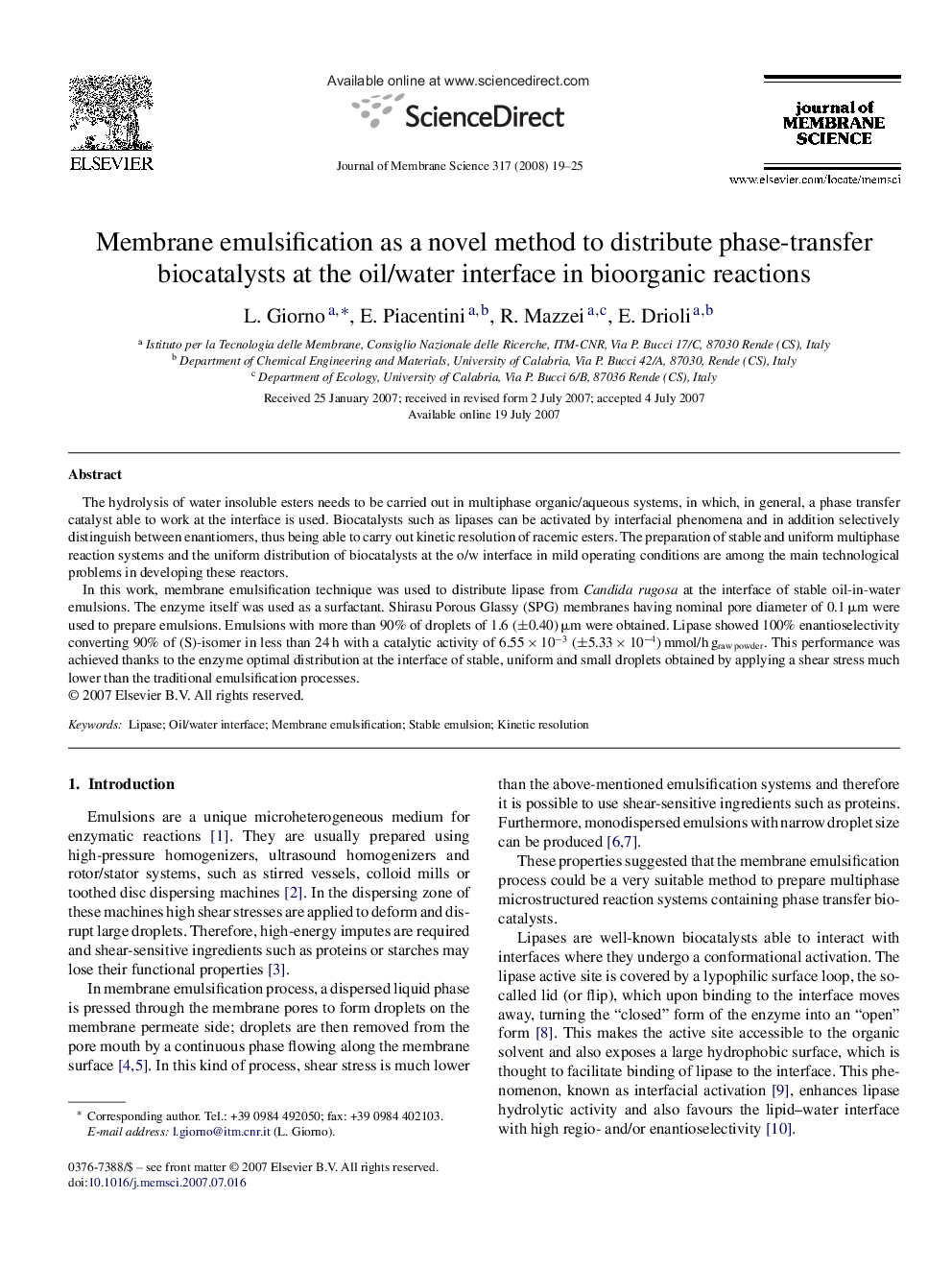| Article ID | Journal | Published Year | Pages | File Type |
|---|---|---|---|---|
| 637881 | Journal of Membrane Science | 2008 | 7 Pages |
The hydrolysis of water insoluble esters needs to be carried out in multiphase organic/aqueous systems, in which, in general, a phase transfer catalyst able to work at the interface is used. Biocatalysts such as lipases can be activated by interfacial phenomena and in addition selectively distinguish between enantiomers, thus being able to carry out kinetic resolution of racemic esters. The preparation of stable and uniform multiphase reaction systems and the uniform distribution of biocatalysts at the o/w interface in mild operating conditions are among the main technological problems in developing these reactors.In this work, membrane emulsification technique was used to distribute lipase from Candida rugosa at the interface of stable oil-in-water emulsions. The enzyme itself was used as a surfactant. Shirasu Porous Glassy (SPG) membranes having nominal pore diameter of 0.1 μm were used to prepare emulsions. Emulsions with more than 90% of droplets of 1.6 (±0.40) μm were obtained. Lipase showed 100% enantioselectivity converting 90% of (S)-isomer in less than 24 h with a catalytic activity of 6.55 × 10−3 (±5.33 × 10−4) mmol/h graw powder. This performance was achieved thanks to the enzyme optimal distribution at the interface of stable, uniform and small droplets obtained by applying a shear stress much lower than the traditional emulsification processes.
